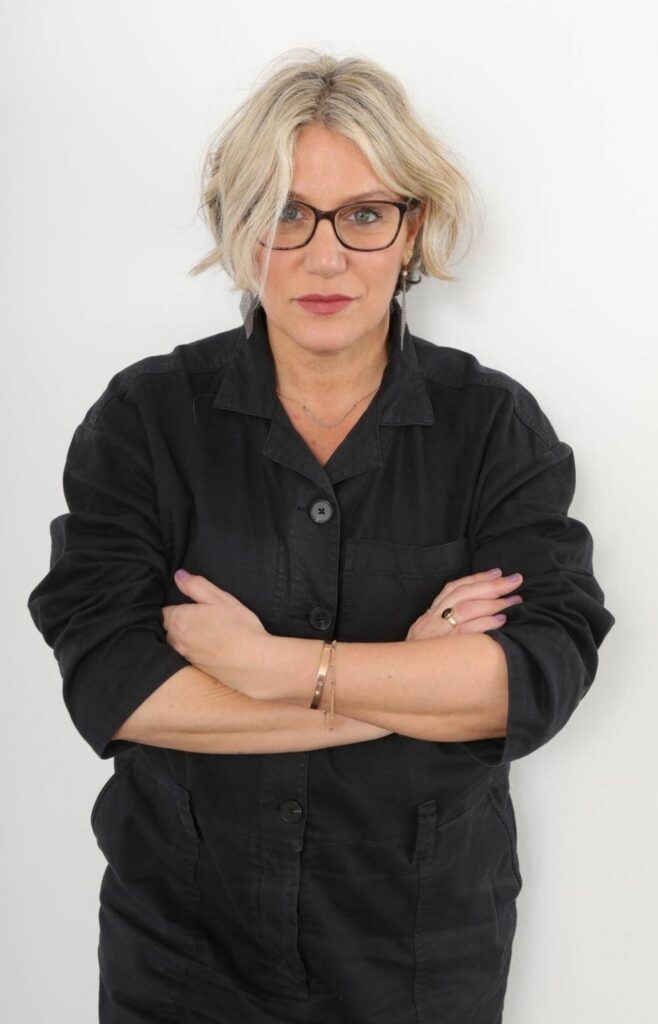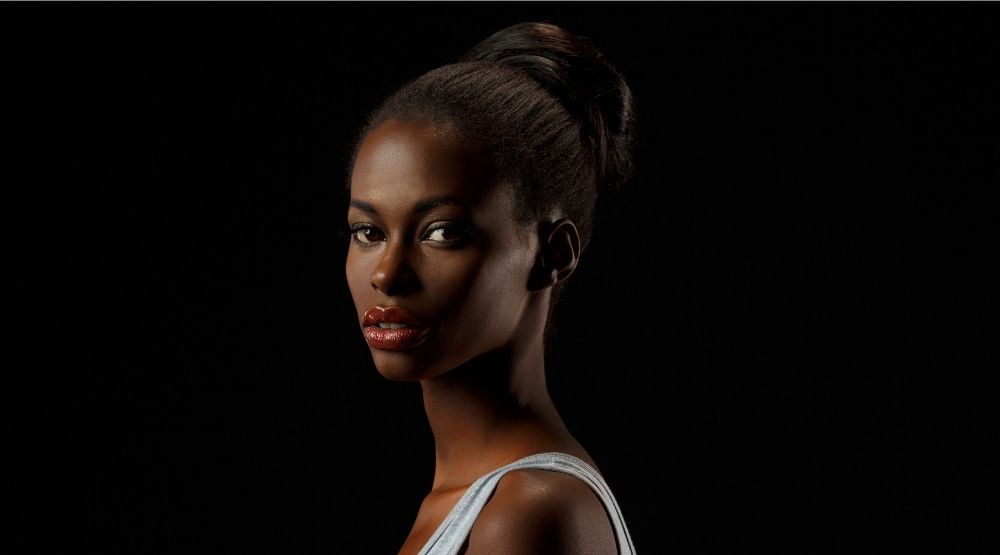For our September-October technology issue, Ruby Feneley investigated how gaps in dermatological research are filtering to technology used in salon treatments – putting clients with skin of colour at risk. Read the report here.
IN 2018 BEAUTY journalist Baze Mpinja wrote of the puzzling gap between retail cosmetics and professional beauty: “I’m sitting pretty on a mountain of dark-brown foundations,” she wrote, “but I hope the momentum spreads to the dermatologist’s office.” Baze noted that just like cosmetics, non-invasive skin procedures have been around for decades. But many of the most common treatments simply aren’t options for women of colour.
Beauty technologies that remove hair, deeply resurface texture and eliminate pigmentation target shade variation in the skin. Historically, they haven’t been sophisticated enough to differentiate between healthy, and hyperpigmented areas (or hair follicles) in deeper skin tones.
Furthermore, most lasers and many beauty devices use concentrated heat to destroy pigment or stimulate collagen. Deeper skin tones evolved in locations close to the equator where melanin was produced to protect the skin from heat and sunlight. Because of this mechanism, when heat is applied to the skin, melanin rushes to the surface, darkening the treatment area – the reverse of what patients seeking treatment for pigmentation and textural irregularities want (Bluestone Centre for Clinical and Scientific Research, Scientific Report, 2017).
To make matters worse – skin with a higher melanin count is more likely to scar – meaning the ramifications for overtreatment are harder to reverse. Melanocytes release melanin at the injury site – skin penetration as mild as a bug bite or squeezed pimple can result in post-inflammatory pigmentation that is slow to fade. Breakouts, pigmentation, and injuries caused by aggressive treatments, from lasers to skin needling and extractions are much harder to heal and correct in African, Asian and South Asian skin than they are in Northern European complexions.
Uncommon Knowledge:

So if all of this is understood, why isn’t the beauty therapy industry catering to people of colour? Simply, it is not common knowledge. Beauty therapists approach skin from their understanding of dermatological principles – and the dermatological community has been woefully behind on this issue. Dr. Michelle Rodrigues is a Melbourne-based dermatologist specialising in skin of colour. Michelle is an international expert in the field working with world-renown pigment and skin of colour centres across Europe, Asia, and the United States, and holding council membership for the Asian Society for Pigment Cell Research and Vitiligo Association of Australia. Her passion for advocacy started when she attended medical school.
As a student of Anglo-Indian background, she was alarmed to find that teaching in the area was “minimal to none.” She explains: “Dermatology was a specialty that started in Europe – so everything, from the language we use to the description of skin conditions has been based on Caucasian skin.” And so follows the education given to beauty therapists. In the last four years, Rodrigues says continued advocacy has seen improvements in teaching and research – but these advancements will take some time to translate to education for beauty therapists. Meanwhile, in her practice, Rodrigues sees adverse effects from inappropriate skincare recommendations like over-the counter peels and creams to professional micro-needling, IPL, and laser treatment therapies. She says it is essential that any practitioner understands adverse reactions will be “amplified” in skin of colour, so they should approach treatment with caution.

The Fitzpatrick fallacy:
One of the most common methodologies beauty therapists will be exposed to during training is the Fitzpatrick’s scale. This system segments skin into six categories based on propensity to burn, from Type I (very fair) to Type VI (Deeply pigmented dark brown to black). This scale is used as a shorthand by beauty therapists and dermatologists globally when triaging patients and clients. Beauty therapists are recognising the limitations of the scale as applied to emerging technologies – and an increasingly diverse customer base. In our Salon Profile interview with Melanie Grant, she noted the limitations of scales like Fitzpatrick when assessing treatment options for clients who may have mixed cultural backgrounds.
Leanne Tran of The One Skin and Wellness agrees. She says “traditional lasers require therapists and technicians to understand clients’ Fitzpatrick phototypes. This is risky when clients have multicultural backgrounds or develop tans during warmer months.” These limitations are being acknowledged beyond the beauty community by industries that use dermatological principles to create technology.
Google has told Reuters that the Fitzpatrick scale, previously used to develop technologies like A.I., has been inadequate. They are now working towards more inclusive and complex identification models. The U.S. Department of Homeland Security recommended at the federal technology’s standards conference last October that the Fitzpatrick scale be abandoned due to its poor representation of diverse populations. As Melanie Grant pointed out, skin tone is an unreliable indicator of skin type – and this is an issue Australian practitioners should be paying attention to. In the last Australian census, just over 50% of Australian’s identified AngloEuropean background and 3.9% Chinese – however, 15% of Australian’s identified as “other.” These statistics indicate a large percentage of the population has mixed cultural heritage or non-European background (The Guardian, “Labour MP calls for questions on race and ethnicity to be added to census,” 2019).

Risk and rewards:
The increased accessibility of powerful salon tech is exciting for salons and beauty therapists – delivering client results comparable to those achieved in a clinic and building client base and profitability. But adverse client outcomes pose risks to business and the industry as a whole. In 2019 influencer IamLindaelaine shared a video with her 186,000 Youtube subscribers in which she recounted a terrible experience with Fraxel laser.
With Mexican and Jamaican heritage, Linda has medium-deep skin. She said she had no skin issues at the time, but a beauty therapist convinced her that the treatment would make her skin “even better.” The Fraxel treatment was disastrous. It resulted in depigmentation, hyperpigmentation, and over a month of confinement for Linda. She also noted the vulnerability clients have regarding their appearance and that beauticians may not realise the level of influence they wield. She said, “Insecurities are real, and if people play on your insecurities, it’s easy for them to manipulate. I think she wanted someone who looked like me doing a review of her treatments.” Linda said that while she’s used herself as a beauty guinea pig “it’s very different when you are the guinea pig for someone who isn’t dealing with the consequences.”
The financial and psychological fallout:
The financial and reputational damage associated with stories like Linda’s are well understood. As recently 2019, a Sydney CBD business paid $25,000 in damages following a “safe and effective” ultrasound procedure that resulted in depigmentation (Gerard Malouf and Partners, 2019). But there are also psychological consequences for staff involved in treatments gone wrong to consider. In 2018 a Netherlands paper titled “Ethical implications in the beauty salon” was published in the Journal of Bioethics. Addressed an alarming rise in in-salon industries, and sought to develop a national guideline for aesthetic practice. The paper focused on legal intervention and regulation, and also examined the protection of those working in the industry. The report said that those who enter the beauty services industry “are the type of people who like to help others.”
These people can both find it difficult to deny treatment to insistent clients or refuse to perform them when faced with insistent managers. They are also more likely to be affected psychologically by client injury.
The U.S. Department of Veterans Affairs has acknowledged the concept of “moral injury” as a form of post-traumatic stress disorder. The Department outlines moral injury as a syndrome that affects returned soldiers and occurs in hospital and caregiving settings. It can arise when an individual “may perpetrate, fail to prevent or witness events that contradict deeply held moral beliefs or expectations.”
While this condition hasn’t been examined in the beauty sector, other caregiving professions like nursing and aged care experience high rates of burnout, and the condition is also present in the retail and customer service industries. Burnout is responsible for between 20-50% of workplace turnover (Forbes, 2019) and could be contributing to our industry’s talent retention problem – potentially compounding the staff shortages recently outlined by the Aesthetics and Beauty Industry Council of Australia (ABIC, 2021).
The way forward:
So, what can our industry do to protect clients, practitioners, and businesses? The U.S. and U.K. are making progress with group action. In the U.S., the hair industry has made strides that the beauty community could make a note of. Rodrick Samuels, an American hairstylist and activist, believes better education and a paradigm shift are what’s required. Samuels said that students are not being equipped to succeed from an educational standpoint, and this is failing the industry as a whole. He says, “We can’t have our industry grow and thrive if the white girl runs to the colour room every time an African American woman walks in the door.”

Millie Kendall, Chief Executive Officer for the British Beauty Industry Council, concurs. She says lack of education undermines the perception of the industry as a professional sector. Far from an imposition, regulatory oversight is essential to ensuring the sector receives the respect it should, as a robust contributor to the economy and equal opportunity employment provider. As in Britain and the Netherlands, regulation for non-medical practitioners in Australia is inconsistent. In Western Australia, an IV diploma or certificate is required to operate a laser for hair removal and for cosmetic procedures like non-ablative pigment and vascular treatment 100 hours of training under supervision must be evidence. In Queensland and Tasmania licenses are also required for use of laser equipment. But in the rest of Australia, there are no requirements or regulations. One benefit of regulation is that it mandates levels of training and education that it better equips salon staff to make informed treating decisions.
Millie says “imagine teaching treatments requiring technology that 20 years ago couldn’t have even been imagined. We need to educate the educators, but there’s a perception from policymakers that we’re uneducated hobbyists, rather than an acknowledgment that we’re a skilled workforce that requires investment.”
What does change look like? Beauty technology providers are responding to increased demand for inclusive treatment options. Leanne Tran says that new laser technology is helping her deliver powerful outcomes for clients of all backgrounds.
She uses the Cynosure Elite I.Q. Laser, which has settings adaptable to different skin tones. Notably, the Elite’s “Skintel” melanin reader assists therapists in establishing the safest parameters for treatment in real-time. She says, “this means therapists aren’t under or overtreating, and reduces treatment timeframes while delivering great results for clients.” While new, state-of-the-art technologies require investment from businesses, Linda believes the benefits far outweigh the costs: “I think modern Australian beauty businesses must offer safe and effective treatments for all clients.” She says that “as we treat a diverse range of clients from all ethnicities, we ensure we offer a range of treatments that are not only safe but results-driven. It will “raise the standards in the country while allowing clients to provide feedback and build trust with their therapists.”
Dr. Michelle Rodrigues believes that beauticians shouldn’t wait for better technology to land in their hands, instead, a focus on upskilling in accurate skin diagnosis is essential. Some skin conditions present differently depending on skin tone, so self-education may be required. She says, “There are fantastic textbooks online– and of course, there are scientific publications and peer-reviewed journals that are a good place to start.” Then, to establish suitability for treatment, get some history, “ask patients about previous treatments, establish there is no history of keloid scarring.” She says that some technologies like radiofrequency micro-needling devices are recommended, but that the tips and parameters used are “crucial if you want to avoid tearing of the epidermis, hyperpigmentation and scarring.”
Ultimately, she says great outcomes lie with individual practitioners: “The success of any treatment is less dependent on technology than it is the practitioners’ intimate knowledge and accurate diagnosis of the skin.” An opportunity for the industry: What has come up for me in researching this piece, and speaking with numerous experts and practitioners, is the sheer scale of consumers who aren’t being catered to. Following two exceptionally challenging years for the beauty industry, it is troubling to think that based on the last Australian Census, up to 15% of the Australian population is not being catered to by our industry. As we look to reopen our industry in 2022, all beauty businesses should consider whether they are catering to the 15% of potential beauty clients, yet to have their needs addressed.
Read the current issue of our digital magazine here:
- For more news and updates, subscribe to our weekly newsletter
- Follow us on Instagram
- Like us on Facebook
- Join Australia’s largest network of beauty industry professionals on LinkedIn
- Subscribe to our print magazine
Have an idea for a story or want to see a topic covered on our site and in our pages? Get in touch at info@professionalbeauty.com.au.

